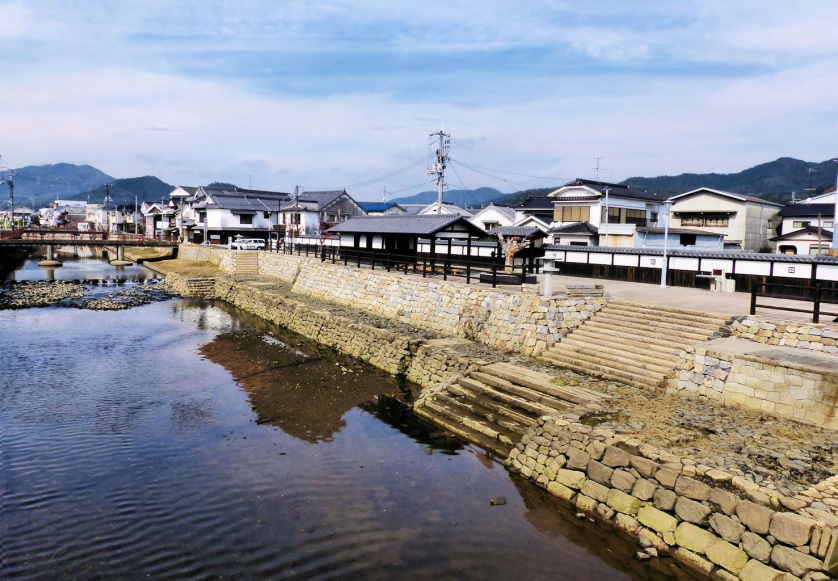The shortest way to get from Tabuse to Tokuyama is to take the main road which would also be fairly flat. However I know that would mean spending more than half a day walking alongside huge factories and refineries and cramped, concrete sprawl and incessant traffic. The alternative is to head inland and come to the coast via the Sanyo Do, the old highway that connected this region to the capital. Even though it means a lot of uphill walking I choose the latter option and it turns out to have been a good choice.
Route 63 heads out of Tabuse and immediately begins to climb. Its also fairly busy with traffic but it turns out to be just the rush hour. Googlemaps has little detail in this part of the country so I unexpectedly come across what obviously used to be a fairly major shrine up a long stepped approach. No autumn color, but the sunlight piercing the misted forest forms sharply delineated rays. The road starts to descend into a valley and down a side road is a small museum built around a burial mound that apparently has some quite major archeological finds, but I forego a visit. These November days are so short and I have a long way to go.
A little further I stop in at a small shrine and am rewarded with Gingko and Maple. The sun keeps disappearing behind clouds so I find myself waiting till it reappears then shoot a couple of pictures and spy out my next vantage point and wait again. The road heads uphill out of the valley again. On my way down to the next valley I stop in at another large shrine. This must have been an important area at one time. In the distance I can see a small museum to the life of Ito Hirobumi, Japans first Prime Minister. This village was where he was born.
As I come into the small town of Suo, named I suspect after the former name of this province, I am able to get off the main road and walk a few kilometers along the embankment of a small river while the main road and traffic runs parallel about 500 meters away. My presence disturbs a lot of ducks. I stop for a break ay a small bridge and behind me against the base of the hills I see a couple of bright yellow Gingko trees and several splashes of red so I wander up the path to investigate and discover an abandonmed manor house. The gate is open and behind the walls I discover a small pond garden, now waterless and overgrown, filled with red and brown leaves. I explore the dark labyrinth of narrow spaces and corridors between the numerous outbuildings. The roof is still in good order so it will be a while yet before it collapses, because that is surely what will happen. There are so many of these kinds of places throughout rural Japan.
A little further and I rejoin the main road after passing underneath an expressway. I am now on the major transport artery that heads west, with a shinkansen and local rail line as well as the expressway and main road. Fortunately I am able to leave the main road and start to walk along the old Sanyodo. Unlike modern roads this winds along the contours of the land and has much less traffic. The sun is getting low so I pick up the pace. Its dark when I get to Kushigahama, and there is still about 4k left to go so I give up walking and take a train the one stop.













































